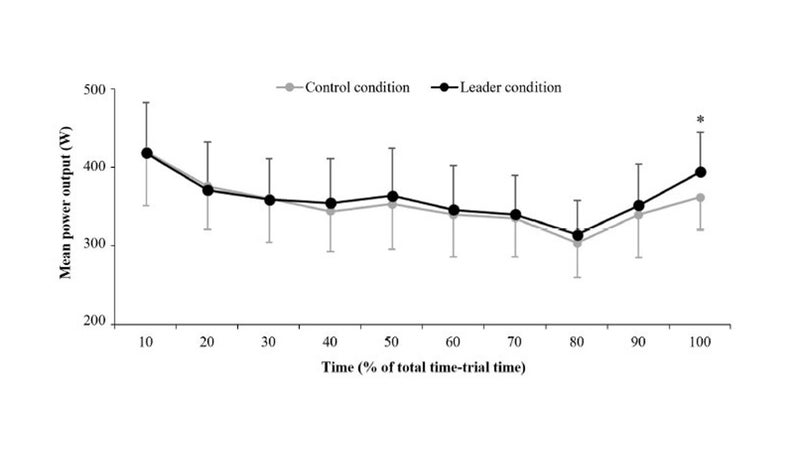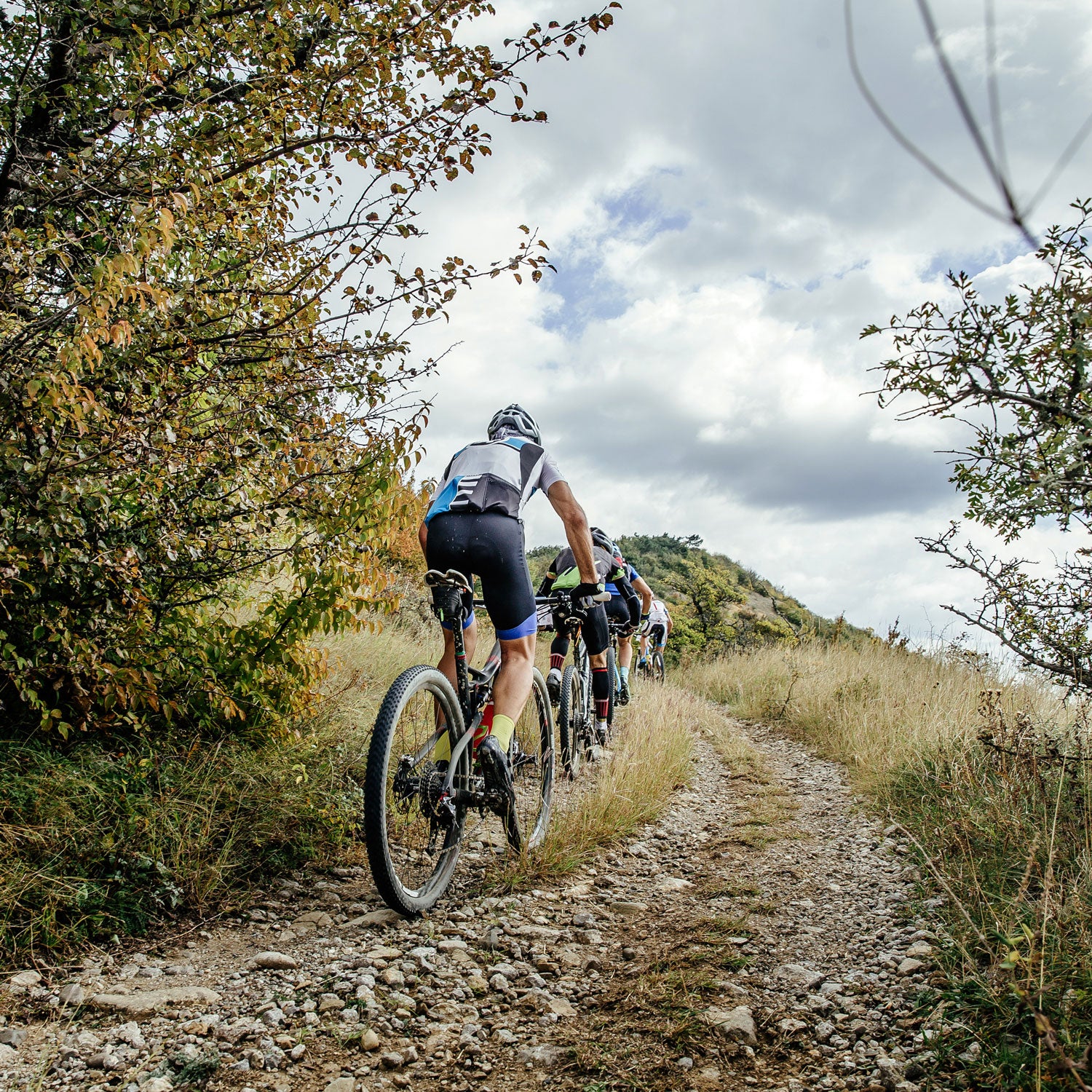Over the last five years, a succession of supremely talented super-domestiques—Richie Porte, Wout Poels, Geraint Thomas, Mikel Landa, Michal Kwiatkowski—have shepherded Team Sky’s Chris Froome to four Tour de France victories. These riders stick with the leader at all times, sheltering him from the wind and chasing down breakaways from rivals. While domestiques have been around for more than a century, they’ve become increasingly indispensable in the last two decades—particularly during the mountain stages where the Tour is won or lost. “The steep slopes of France’s mountain ranges,” , “is where domestiques’ work is most obvious.”
��
But there’s a mystery here. The most obvious benefit of having a friendly cyclist in front of you is aerodynamic: drafting behind another cyclist typically allows you to do about 30 percent less work to maintain the same pace. But that’s heavily dependent on how fast you’re riding. Once you start climbing a mountain, your speed drops and drafting becomes less important. Instead, the hard part of climbing a mountain is fighting gravity, which your domestique can’t help you with. According to , drafting becomes essentially irrelevant on gradients steeper than 7.2 percent. For context, the average gradient on Mont Ventoux is .
��
Why, then, does Froome apparently get such a big boost from having riders like Kwiatkowski “pulling” him up the mountain stages? One theory is that the benefits are primarily psychological—perhaps, for example, allowing the leader to maintain a steady and efficient pace without having to expend as much mental effort on self-monitoring. Focusing on something external, like your teammate’s back, may also take your mind off how much you’re hurting.
��
This is a question that isn’t unique to cycling: a few years ago, on members of the Tunisian national track team concluded that the benefits of drafting in a 3,000-meter race were a “placebo,” resulting from psychological rather than aerodynamic benefits. Similarly, after Eliud Kipchoge followed an aerodynamically optimized group of six pacemakers to run a 2:00:25 marathon in Nike’s Breaking2 race last year, at the role of pacemakers in the four most recent marathon world records—and found that the record-setters were mostly running beside rather than behind their pacemakers. Whatever benefit they believed they were getting from their pacers, it wasn’t aerodynamic.
��
This is the riddle that a research team led by Théo Ouvrard at France’s University of Franche-Comté, working with the FDJ professional cycling squad, decided to tackle in in the International Journal of Sports Physiology and Performance. To do it, they recruited 12 well-trained competitive cyclists to do a pair of uphill time trials over a distance of 2.7K (1.7 miles) with a fairly steady gradient averaging 7.4 percent. In random order on separate days, they did it once solo and once being paced by an experienced domestique, who was riding an electrically-assisted bike giving him an extra 150 watts to ensure that he could pace steadily. The pacer was instructed to act just as he would in a real race, following the instructions of the rider behind him to speed up or slow down.
��
Sure enough, the riders went faster when they were paced, improving their time by 4.2 percent from 9:05 to 8:42 on average. But why?
��
There are two basic possibilities. One is that riders were able to deliver more power to the pedals thanks to the presence of their teammate, enabling them to ride faster. This would presumably be accompanied by higher heart rate and lactate levels, signaling that the riders were essentially pushing their bodies harder.
��
The other possibility is that they delivered the exact same power to the pedals, but the bike still went faster. In the latter case, that would mean that the forces opposing them—gravity, rolling resistance, and aerodynamic drag—were lessened. The first two of these forces, gravity and rolling resistance, were held constant by exactly matching the total weight of rider plus bike before each ride, and by inflating the tires to exactly the same pressure. So only the aerodynamics could change.
��
Here’s what the average power output looked like in the two rides:

You can see that the power, which was measured by a hub-mounted power meter, stays essentially identical, with a significant difference emerging only in the last 10 percent of the ride. During that last segment, the paced cyclists were able to ramp up their power output by an extra 9.1 percent relative to the unpaced ride. Similarly, the average heart rate and final lactate levels were essentially the same in both rides.
��
When you run these numbers, the explanation for the improved performance isn’t all aerodynamics, but it isn’t all mental either. Since the power outputs in the two rides are so similar, the biggest factor is that the cyclists are getting more speed from a given level of power thanks to reduced drag. That explains 58 percent of the performance gains, according to the researchers. Such a big aerodynamic contribution while climbing is a bit of a surprise, but it’s perhaps a reminder that real-world “ecologically valid” tests are more useful than theoretical models in determining what really matters.
��
The rest of the performance gain is mostly due to the increased power in the final stages of the climb. In order to understand what psychological factors may have been at work, the cyclists were quizzed as soon as they finished about their ratings of effort and pleasure, where they were focusing their attention, and what they were thinking about during the ride. While this approach is incapable of reading the cyclists’ minds during the race, it should give some insights about their thought processes. The idea is that focusing on external pace cues, like a teammate in front of you, might reduce the amount of inwardly focused time you spend dwelling on your own discomfort, in addition to motivating you and relieving you of some of the cognitive burden of pacing.
��
However, contrary to the researchers’ expectations, there were no apparent differences in levels of intrinsic versus external motivation, or in the relative amount of attention paid to internal monitoring, outward monitoring, voluntary or involuntary distractions, and so on. The only notable psychological difference was that the cyclists enjoyed the paced ride more: they rated their pleasure as 4.6 out of 10 compared to 3.3 in the unpaced ride.
��
There are some ways you can sort of explain this in a hand-waving way. The researchers point to the work of , noting that feelings of pleasure may have a subtle influence on how your brain interprets the effort of exercise. The fact that you’re having a bit more fun when tucked behind your teammate allows you to tolerate higher levels of discomfort, enabling you to ramp up the power in the final stages of the ride.
��
When I reflect on my own experiences in paced versus unpaced running races, the overwhelming impression I had was that tucking in behind a rabbit allowed me to essentially turn my mind “off” and run in autopilot for most of the race. Then, when the rabbit stepped off the track, I would have more mental energy left for the push to the finish. This study didn’t find that—but then again, it didn’t have the ability to distinguish between what the athletes were thinking about, say, halfway through the race versus in the final portion of the race. It assumed that thought patterns stayed roughly similar throughout, which may have missed some subtle changes.
��
So in the end, I think this study cleared up half a mystery: yes, drafting is a big deal even when you’re climbing a mountain, at least for top riders under these particular conditions. The other half of the mystery, meanwhile, is as obscure as ever. What is the strange alchemy that enables friends and teammates to bring out the best in us? There have been lots of theories, involving things like . But the bottom line, as the researchers point out, is that “it may no longer be possible for any professional cyclist to win a Grand Tour without using this strategy”—because it really works.
My new book, , with a foreword by Malcolm Gladwell, is now available. For more, join me on and , and sign up for the Sweat Science .


